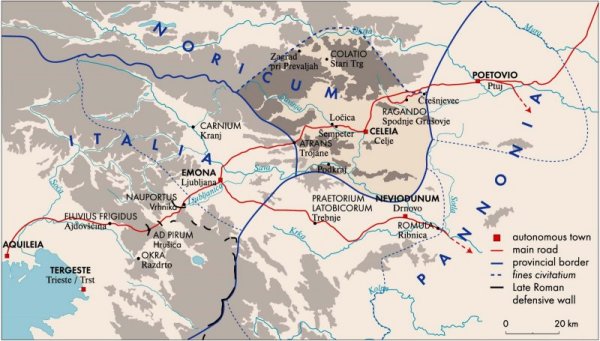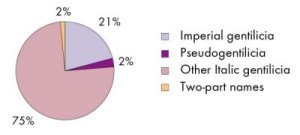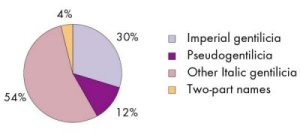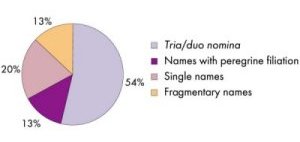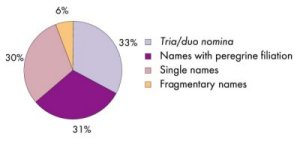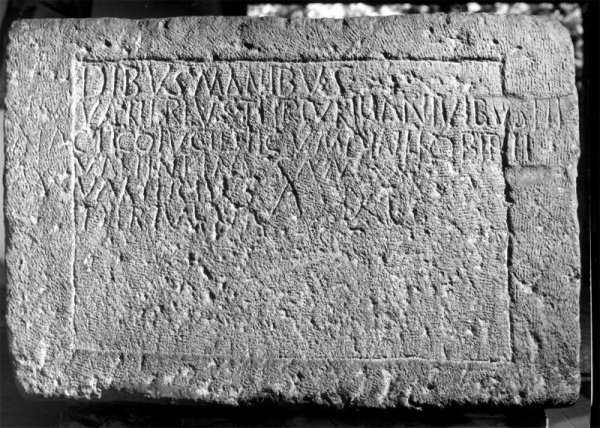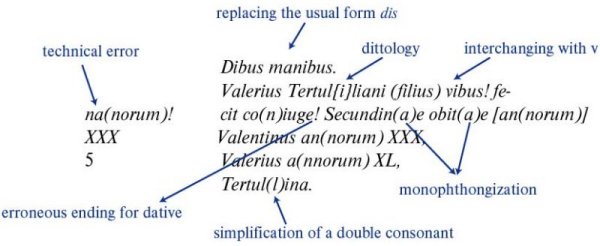 Institute of Archaeology Institute of Archaeology |
[Slovenian] |
| Home | Members | Programme | Projects | Laboratory |
| Database | Publications | Library | Links | Archive |
|
Linguistic Characteristics of Inscriptions of Roman Celeia Julijana Visočnik, Ljubljana 2007. The title refers to a PhD thesis, which was finished in February 2007, to provide a basis for a corpus of the Roman inscriptions from Celeia and its territory - they are ca. 500 - which is to be finished in the near future. The southernmost Norican town of Celeia, which became municipium in the time of the emperor Claudius (municipium Claudium Celeia), was in the pre-Roman period one of the most important centres of the Celtic Taurisci. It became the administrative centre for a broad area of southern Noricum, thus acquiring the role of fons et origo for its Romanization.
The precise division of the names into three big groups (tria/duo nomina, names with peregrine filiation, and single names) is necessary for the transparency of certain Romanization aspects. The collected names document the intertwining of the Latin (Roman) and autochthonous habit of name giving, which illuminates an interesting way of melting the two cultures. The group tria/duo nomina can be further subdivided into:
Two points are evident: first, Italic immigrants primarily settled down in the town; and second, pseudogentilicia are more typical for the ager than the town. The distribution of the Italic gentilicia indicates which Italic families were active in the colonization of the Celeian area: Albinii, Pompeii, Varii, Cassii, Rufii, Matii, Petronii, and others. Immigrants, whose arrival implied Romanization, mostly came from northern Italy: Aquileia, Tergeste, etc. TThe names with the s.c. peregrine filiation are divided according to the source of individual component parts (Latin, Celtic). Single names occur throughout all periods; the social status of an individual inhabitant depends on the period. In the town Latin names prevail, in ager Celtic; the share of Greek names is the same in both. .
As expected, a larger proportion of Roman citizens in the town indicates that the town was romanized sooner and more comprehensively.
The inscriptions in Celeia are written in Vulgar Latin; its numerous characteristics are evident mostly in phonetics, orthography, and morphology. These peculiarities are often perceived as errors, while actually they are valid as deviations from the accepted norms of classical Latin. A distinction can be made between two types of errors: the first are s.c. technical errors; the second are of the linguistic nature, and occurred under the influence of the spoken language; these are found primarily in the inscriptions commissioned by ordinary people. As expected, more such errors occur in the inscriptions from the Celeian surroundings.
The analysis of the vocabulary, linguistic peculiarities, and names in the inscriptions of Celeia confirms the important role played by the town in promoting the Romanization in southern Noricum. The process of acculturation became particulary intensive after the annexation of Noricum to the Roman Empire ca 15 BC, when Latin rapidly spread from northern Italy to Celeia and from there to the countryside, at first along the main roads and later into the remote, difficult-to-reach parts of Celeian ager. Both, the Italic immigrants and the local elite, played an important role in this development. References
|
